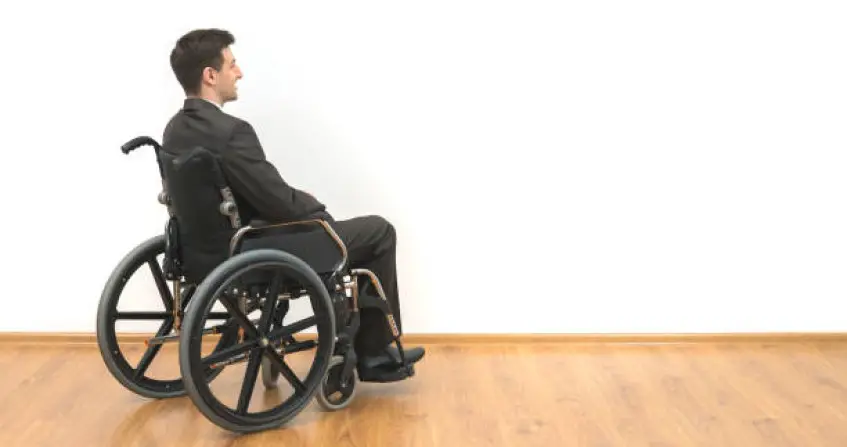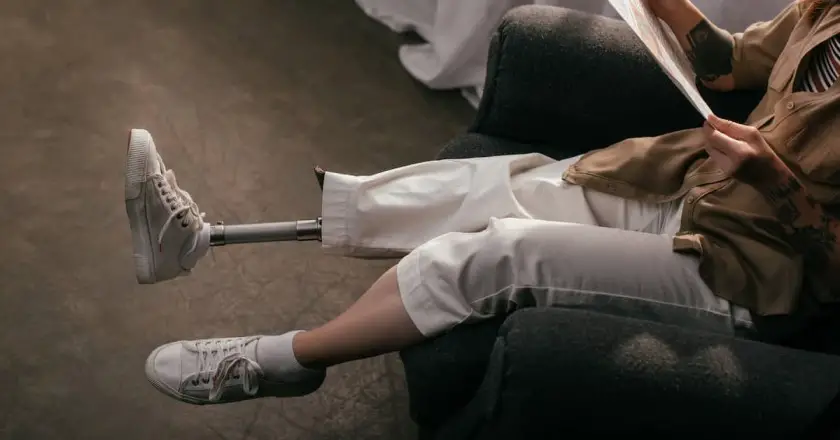Prosthetic limbs or prostheses are artificial body parts (arms and legs precisely) meant to help amputees do things that a normal limb would do (at least to an extent).
Many modern prostheses are so realistic-looking that you will actually not know they are not real until you are told. Some do not just have the looks alone, they also function almost like real limbs.
To so many amputees out there, prostheses are one of the greatest inventions ever. Based on their function and value, this is very true about artificial limbs.
The invention has helped so many amputees to live a “normal” life. Whether you lost your hand or leg by accident, illness, war injuries, or birth defects, prostheses are one of the most helpful mechanical devices you will ever come across. They offer you nearly all the functions a normal hand or leg will offer.
What are prosthetic limbs really made of? You might be asking.
The answer is in this article. Below, you’ll find a detailed list of all the items used in manufacturing these very helpful devices for people with missing limbs.
Table of Contents
- Materials Used in the Production of Prosthetic Limbs
- Parts of a Prosthetic Limb and How They Function (A Complete Breakdown)
- Wrap Up
Materials Used in the Production of Prosthetic Limbs
The main purpose of a prosthesis is to restore, to some extent, the functions of a normal limb to an amputee. For this reason, the raw materials used in making these devices are carefully selected so as to ensure that the aim of the product will be achieved. This is why most materials used are lightweight and easy to adjust and move about.
Basically, the type and form of a prosthesis determine the type of materials it is made of. Presently, there are about 4 main types of prosthetic limbs. Let’s take a close look at each of them below.
Transtibial Prostheses
These are artificial limbs that are meant to fit below the knee. They replace a missing leg that starts from the knee down. They are usually made of wood, rubber, plastic, and carbon fiber.
Due to the materials that are used in making them and their location in the body, they are often easier to learn in terms of movement. Other types are a little more difficult and take a longer time to learn.
Related: The Best Way to Use a Walking Frame
Transfemoral Prostheses
These types are used in the upper part of the legs, above the knee. They’re usually attached to the residue (the part of the limb that is left after an amputation, what some people call the stump) in such a way that moves from the hip or thigh is possible.
Most modern transfemoral prostheses are made of carbon fiber, computer microprocessors, mechanical linkages, plastic, motors, and silicone.
When it comes to movement, these types of prostheses are usually the most difficult to walk with. You will need to devote a whole lot of time to learning how they work. At least 6 to 8 weeks.
Transradial Prostheses
These are artificial arms that are attached to replace a missing arm from the elbow down. They are usually attached below the elbow using cables that may reach up to the shoulders.
In the past, this type of prosthesis was usually made of iron, steel, wood, or other materials that are always difficult to move. Today, it is often made of plastics, carbon fiber, and silicon.
Transhumeral Prostheses
These types come with both lower and upper arms, including an elbow. They are usually attached above the elbow.
The modern versions of these are the myoelectric limbs. Myoelectric prostheses consist of electrodes that sense the movement of the muscles in the upper arm and cause the prostheses to move accordingly. Though very costly, these types are widely regarded as the best artificial arm to have. They are usually made of motors and computer microprocessors.
From the types listed above, it is easy to see that the most common items in manufacturing modern prosthetic limbs include foams, plastics, carbon fibers, motors, mechanical linages, and computer microprocessors.
Related: What to Consider when Choosing Disabled Clothing for Wheelchair Users
Parts of a Prosthetic Limb and How They Function (A Complete Breakdown)
A prosthesis consists of many parts that are grouped into two; the attachment and control system. They all work together to help in performing one function or the other. Below is a complete breakdown of the parts and how they function.
The Attachment
How good a prosthesis performs is largely dependent on how well fitted it is to the remaining part of the body. If it is not well attached to the residue, then the functions will be greatly limited.
Apart from that, pains, injuries, or even severe damages may arise as a result of the artificial limb not being properly joined to the residue. To avoid this, the manufacturers are very careful when designing the attachment mechanism. It is built in such a way that it fits very well with the body.
The part of the prostheses that attaches to the residue is called the socket. Special attention is paid to this part when making the prostheses. If it’s not well-fitting, the artificial limb may not be of much use.
The Control
This consists of cables that run through the artificial limb, making it function just like the muscles in your hands and legs. Most types of prostheses are built with these. The cables can be pulled to make the limb do one thing or the other.
In the most recent types, like the myoelectric prostheses, electrodes read the muscular impulses in the body and cause the artificial limb to act accordingly. These types of artificial limbs are far better and more sophisticated. Howbeit, very costly.
Wrap Up
Most modern prosthetic limbs are made of carbon fiber, plastic, foam, motors, and computer microprocessor. Unlike their earlier versions that are made with wood, steel, and iron, these modern types are more sophisticated, effective, and realistic. Some have flesh-like skins that make it difficult to know that they are artificial arms or legs without being told.
In the nearest future, I am quite sure that they will function fully almost like normal hands. This is based on numerous researches that are going on all over the world in this field.
Check Out Related Articles
- Most Common Reasons for Wheelchair Use
- Complete Guide on Choosing Disabled Clothing for Wheelchair Users
- Best One-Handed Stores
- List of Where to Sell Wheelchairs
- How to Use a Walking Frame Correctly
- How to Get a Wheelchair Bound Person into a Car
- How to Change a Wheelchair Tire Like a Pro
- How Disability Insurance Investigators Investigate (Explained)
- How to Use the Pedal Exercise Equipment for Seniors in a Wheelchair
- How to Oil Your Wheelchair Effectively
- How to Fill Out Voluntary Self Identification of Disability




